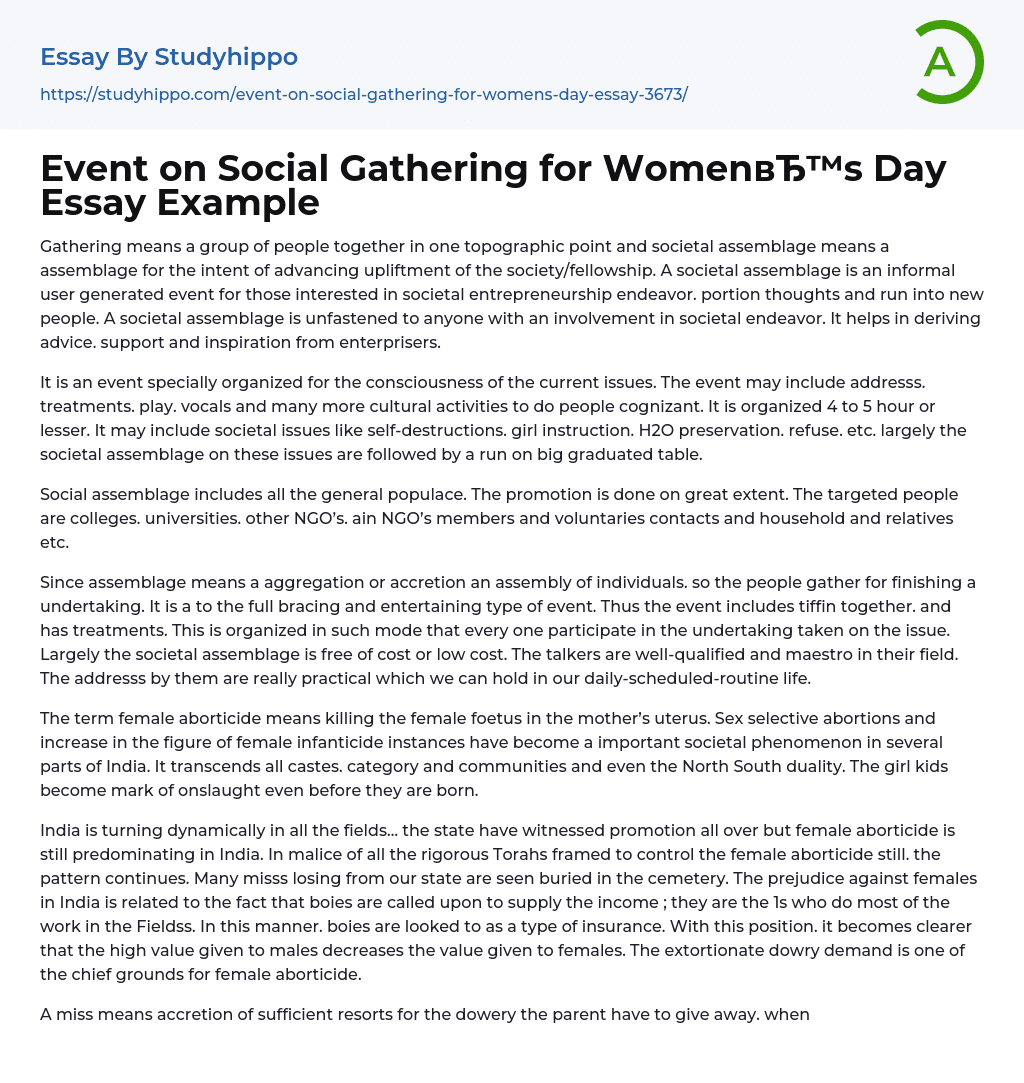Gathering and social assembly are both events where a group of people come together in one location. Social assemblies specifically aim to promote the betterment of society or fellowship. These informal events, focused on social entrepreneurship, allow users to share ideas, meet new people, and seek advice and support from entrepreneurs. Open to anyone interested in social entrepreneurship, these assemblies serve as platforms to raise awareness on current issues. Typically lasting for about 4 to 5 hours or less, they may include activities such as speeches, discussions, performances, and songs. They often concentrate on societal issues like suicide prevention, girls' education, water conservation, waste management etc., accompanied by large-scale awareness campaigns.
Social assemblies target the general public and are extensively promoted to colleges, universities, other NGOs (Non-Governmental Organizations), existing NGO members, volunteers conta
...cts,family members,and relatives.These engaging and entertaining events involve having meals together and facilitating discussions where everyone can actively participate in addressing the issue at hand.The overall cost of attending these societal gatherings is mostly free or low cost.The well-qualified and expert speakers provide practical addresses that can be integrated into our daily routine. Female aborticide, which refers to the killing of female fetuses in the mother's uterus, is a significant social issue in India. It transcends caste, category, and community divisions as well as the North-South divide. Even before they are born, girl children become targets of violence. Despite strict laws attempting to control it, India still faces a prevailing issue of female aborticide. Many girls from our country are seen buried in cemeteries due to this practice. The bias against females in India arises from the expectation that sons will provide income an
perform most of the work in the fields, creating a form of insurance. This perspective emphasizes how males are valued more than females. One of the main reasons for female aborticide is the exorbitant dowry demand. Having a daughter means accumulating sufficient resources for the dowry that parents must give away when their daughters get married; it is also a matter of prestige. Demanding more money and material goods as dowry often puts poor households at a disadvantageThe mistreatment of women by their in-laws has led to a significant number resorting to suicide. The rise in murders targeting women whose families could not provide adequate dowries is a major concern. Moreover, the immediate killing of girls upon birth is prevalent in many small towns in India, where they are considered burdens. Female infanticide, which has resulted in millions of selective deaths throughout history, remains a pressing issue in various Third World countries like China and India due to the low status attributed to women globally. Female infanticide involves deliberately killing baby girls as a consequence of preferring male babies and devaluing female births. It is part of the broader problem of infanticide, which also targets disabled infants and male babies along with maternal mortality rates. There may be debates on whether these practices should be classified as "genocide" or "gendercide". The existence of these practices was revealed when demographic statistics were first collected during the 19th century. Notably, several small towns in India displayed an alarming absence of female infants compared to significantly higher numbers of male children observed across 30 other towns – 343 boys versus only 54 girlsAccording to census statistics, the age-old
practice of female infanticide in rural India can still be seen as a rational decision. The gender disparity has evolved over time, with a decrease from 972 females for every 1,000 males in 1901 to 929 females per 1,000 males.
- Pro Choice essays
- Pro Life essays
- Should Abortion Be Legal essays
- Against abortion essays
- Abortion Debate essays
- Child essays
- Childcare essays
- Child labor essays
- Doll essays
- Nightclub essays
- Anatomy and Physiology essays
- Addiction essays
- Biodegradation essays
- Dental Care essays
- Disease essays
- Disorders essays
- Health Care essays
- Intelligence Quotient essays
- Nutrition essays
- Olfaction essays
- Public Health essays
- Women's Health essays
- World health organization essays
- Cancer essays
- Infectious Disease essays
- Lung Cancer essays
- Neurology essays
- Physical Exercise essays
- Medicine essays
- Sex essays
- Inquiry essays
- Disability essays
- Poison essays
- Action Potential essays
- Nervous System essays
- Childbirth essays
- Puberty essays
- Blood essays
- Kidney essays
- Neuron essays
- Body essays
- Glucose essays
- Sense essays
- Heart essays
- Skeleton essays
- Human Physiology essays
- Eye essays
- Immune System essays
- Muscle essays
- Skin essays




